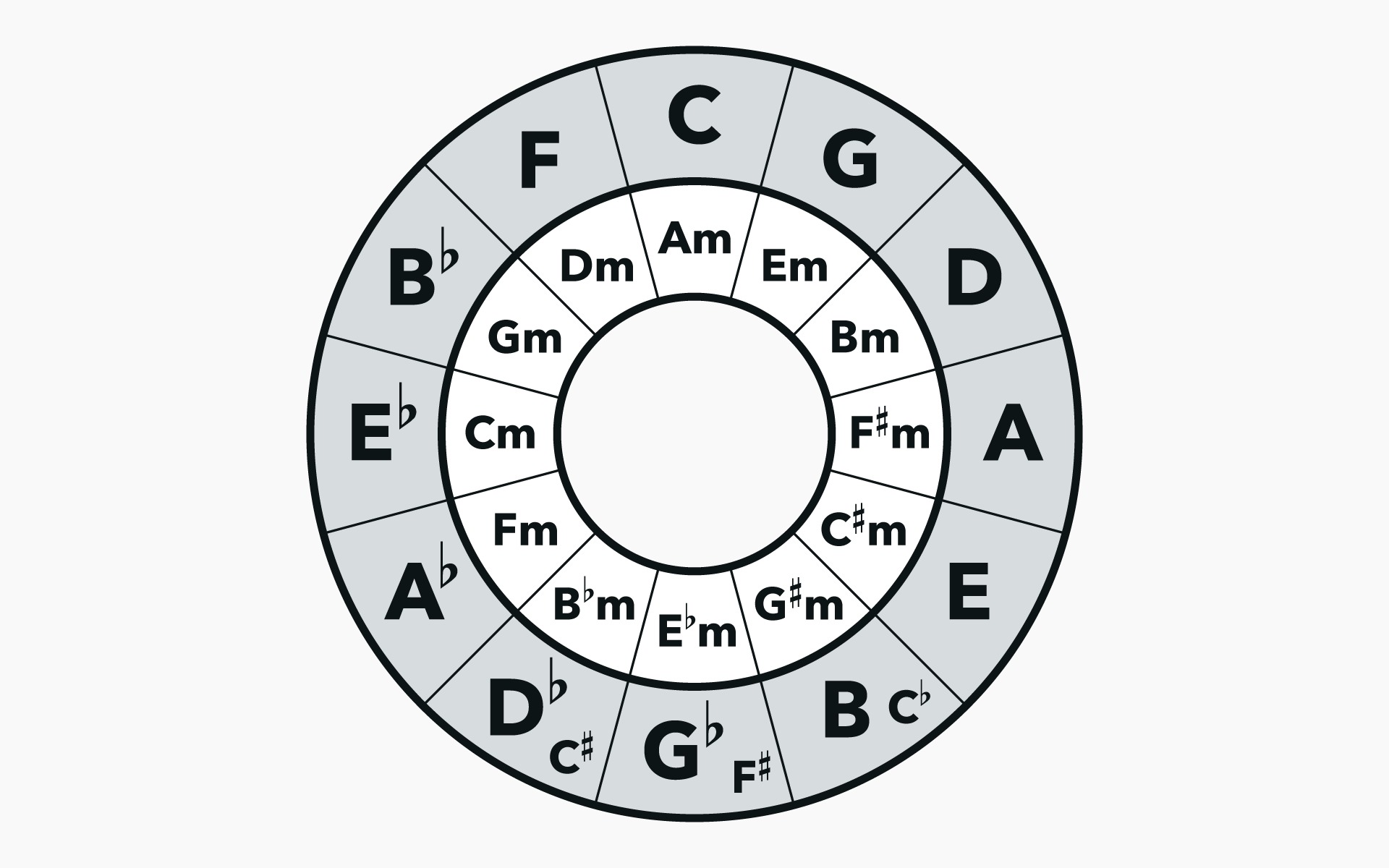Home>Production & Technology>Music Theory>How Do I Make A Music Theory Test


Music Theory
How Do I Make A Music Theory Test
Modified: February 1, 2024
Looking to create a music theory test? Learn how to make a comprehensive music theory assessment with our step-by-step guide. Boost your knowledge and understanding of music theory today!
(Many of the links in this article redirect to a specific reviewed product. Your purchase of these products through affiliate links helps to generate commission for AudioLover.com, at no extra cost. Learn more)
Table of Contents
- Introduction
- Step 1: Determine the Objectives of the Music Theory Test
- Step 2: Choose the Test Format
- Step 3: Select the Test Content
- Step 4: Prepare the Test Questions
- Step 5: Organize the Test Sections
- Step 6: Create Answer Keys or Scoring Rubrics
- Step 7: Design the Test Layout and Formatting
- Step 8: Proofread and Review the Test
- Conclusion
Introduction
Welcome to the world of music theory! Whether you’re a student, a musician, or just a curious music enthusiast, understanding the foundations of music theory is essential for deepening your musical knowledge and skills. One effective way to assess your understanding of music theory concepts is through a music theory test. By taking a test, you can evaluate your knowledge, identify areas for improvement, and measure your progress over time.
In this article, we will guide you through the process of creating a music theory test. We will cover important steps, from determining the objectives of the test to designing the layout and formatting. By following these steps, you’ll be able to create a comprehensive and engaging test that effectively assesses your or your students’ grasp of music theory.
Whether you are a music teacher looking to evaluate your students or an individual interested in self-assessment, this article will provide you with valuable insights and practical tips for developing a well-rounded music theory test. So, let’s dive in and explore the steps involved in making a music theory test!
Step 1: Determine the Objectives of the Music Theory Test
The first step in creating a music theory test is to clearly define the objectives you want to achieve through the assessment. What specific knowledge or skills do you want to measure? Are you focusing on basic music theory concepts like notation and key signatures, or do you want to assess more advanced topics such as chord progressions and harmonic analysis?
By determining the objectives, you can tailor the content and structure of the test to effectively evaluate the desired competencies. Consider the level of proficiency or grade level of the test takers and align the objectives with the curriculum or syllabus.
For example, if you are creating a music theory test for beginner students, your objectives might include:
- Assessing the understanding of basic music notation
- Evaluating knowledge of key signatures and scales
- Testing the ability to identify intervals and triads
On the other hand, if you are creating a music theory test for more advanced students, your objectives might include:
- Evaluating understanding of advanced harmonic concepts
- Assessing knowledge of modal scales and their applications
- Testing the ability to analyze complex musical forms and structures
By clarifying your objectives early on, you can ensure that the test aligns with the desired outcomes and provides a comprehensive assessment of the necessary music theory skills.
Step 2: Choose the Test Format
Once you have established the objectives of your music theory test, the next step is to determine the format that best suits your assessment needs. There are various test formats to choose from, and each has its own advantages and considerations.
1. Multiple Choice: This format presents a question followed by several possible answers. Test takers must select the correct response from the options provided. Multiple-choice questions are effective for assessing knowledge of facts, definitions, and identifying specific elements in music theory.
2. Fill in the Blanks: This format requires test takers to complete a sentence or a musical notation by filling in the missing information. Fill-in-the-blank questions assess understanding and application of concepts, and they can be used to test recall or problem-solving skills.
3. True/False: True/false questions present a statement, and the test taker must determine whether it is true or false. This format is useful for assessing the understanding of basic concepts and principles, but it may not be suitable for evaluating more complex or nuanced ideas.
4. Short Answer/Essay: This format allows test takers to provide longer, written responses to questions. Short answer or essay questions are ideal for assessing deeper understanding, critical thinking skills, and the ability to articulate and explain concepts in music theory.
Consider the content you want to assess and the level of detail you expect from the test takers. Multiple-choice and fill-in-the-blank formats are suitable for objective assessments, while short answer/essay questions provide more opportunities for subjective evaluation and demonstration of knowledge.
Moreover, keep in mind the time constraints and resources available for grading. Multiple-choice tests can be quickly graded using automated systems, while short answer/essay questions require manual evaluation.
Remember that you can also combine different formats in your test to ensure a comprehensive assessment. For example, you can have a section of multiple-choice questions to test knowledge and a section of short answer/essay questions to gauge critical thinking and application of concepts.
Consider the nature of the content and the objectives of the test when choosing the format, and select the one that best aligns with your assessment goals.
Step 3: Select the Test Content
After determining the objectives and choosing the test format, it’s time to select the specific content that will be covered in the music theory test. The content should align with the objectives and cover the essential concepts and skills you want to assess.
Start by reviewing the curriculum or syllabus to identify the key topics and areas of focus. Consider the level of proficiency of the test takers and ensure that the content is appropriate for their knowledge and skills. Determine the scope of the test by selecting the specific concepts, theories, and practical applications that should be included.
Here are some examples of the content areas you might consider including in your music theory test:
- Music notation: Including staff notation, note values, rests, time signatures, and key signatures.
- Scales and modes: Testing knowledge of major and minor scales, pentatonic scales, and modes such as Ionian, Dorian, and Mixolydian.
- Intervals and chords: Assessing the understanding of intervals, chord construction, chord progressions, and chord inversions.
- Rhythm and meter: Including concepts such as rhythmic patterns, syncopation, and understanding different time signatures.
- Harmony and analysis: Testing knowledge of harmonization, cadences, chord functions, and harmonic analysis.
- Musical forms and structures: Evaluating understanding of musical forms such as binary, ternary, and sonata forms and identifying structural elements within a piece of music.
Remember to strike a balance between foundational concepts and more advanced topics, depending on the level of the test takers. Consider including a range of difficulty levels to assess various levels of proficiency and challenge the test takers appropriately.
Once you have selected the content, create a detailed outline or list of the specific topics or subtopics that will be covered in each section of the test. This will guide you in creating the actual test questions and ensure a comprehensive coverage of the necessary music theory knowledge and skills.
By carefully selecting the test content, you can create an assessment that accurately measures the test takers’ understanding of the essential elements of music theory and their ability to apply those concepts in practice.
Step 4: Prepare the Test Questions
Now that you have determined the objectives, chosen the test format, and selected the content, it’s time to prepare the actual test questions. This step involves crafting clear and concise questions that align with the objectives and effectively assess the knowledge and skills you want to evaluate.
Consider the following tips when preparing your music theory test questions:
- Be specific: Clearly state what you are asking in each question. Avoid ambiguous language or vague descriptions that could lead to confusion or misinterpretation.
- Use varied question types: Incorporate a mix of question types such as multiple-choice, fill in the blanks, true/false, and short answer/essay questions. This provides diversity in assessment and gives test takers the opportunity to demonstrate different skills.
- Ensure relevance: Make sure that each question directly relates to the objectives and the selected content. Avoid including extraneous information or irrelevant topics.
- Include different levels of difficulty: Design questions that cater to different proficiency levels. Provide easy, moderate, and challenging questions to effectively assess the test takers’ understanding and knowledge across different concepts.
- Cover a range of topics: Ensure that the test questions cover the breadth of the selected content. Include questions on various music theory concepts to provide a comprehensive assessment of the test takers’ knowledge and skills.
- Consider practical applications: Incorporate questions that require the application of music theory concepts in practical scenarios. This could involve analyzing musical excerpts, identifying chord progressions, or completing a musical notation.
- Provide clear instructions: Give clear instructions for each question, specifying what is expected in the response. This helps prevent any misunderstandings and ensures consistent evaluation.
Take the time to carefully review and revise the test questions to ensure they are accurate, relevant, and well-constructed. Consider seeking feedback from colleagues or fellow music educators to gather different perspectives and insights.
By preparing well-crafted and purposeful test questions, you can effectively assess the test taker’s knowledge and skills in music theory, while providing them with an opportunity to demonstrate their understanding and application of the concepts.
Step 5: Organize the Test Sections
Once you have prepared the test questions, the next step is to organize them into coherent sections. This step involves structuring the test in a logical and organized manner to ensure a smooth flow and comprehensive assessment.
Consider the following guidelines when organizing the sections of your music theory test:
- Group questions by topic: Arrange the questions into sections based on the different content areas or topics covered in the test. This allows test takers to focus on specific concepts and provides a clear structure to the assessment.
- Sequence the sections: Determine the order of the sections in a way that progresses from easier to more difficult or from foundational concepts to more advanced ones. This helps build confidence and facilitates a gradual increase in complexity.
- Consider time allocation: Estimate how much time is required for each section and allocate appropriate time limits. Ensure that the sections are balanced in terms of time allocation, considering the difficulty level and number of questions in each section.
- Provide clear instructions: Include clear instructions at the beginning of each section to guide test takers on how to approach the questions. Specify any specific requirements or expectations for each section.
- Consider the pacing: Consider the pacing of the test by organizing sections in a way that maintains a consistent rhythm and avoids overwhelming the test takers. Strike a balance between challenging and manageable sections to keep the test takers engaged throughout the assessment.
- Include breaks if necessary: If the test is lengthy or spans an extended period, consider incorporating breaks between sections to allow test takers to rest and recharge.
Ensure that the organization of the test enhances the clarity, focus, and efficiency of the assessment. Carefully consider the sequence and structure of the sections to create a well-rounded test that effectively evaluates the test takers’ music theory knowledge and skills.
By organizing the test sections thoughtfully, you can create a cohesive and manageable assessment that provides a structured approach to measuring the test takers’ understanding and proficiency in music theory.
Step 6: Create Answer Keys or Scoring Rubrics
After crafting the test questions and organizing the sections, it’s important to create answer keys or scoring rubrics to facilitate the grading process and ensure consistency in the evaluation of test responses. Answer keys or rubrics provide clear guidelines for assessing and assigning scores to the test takers’ answers.
The creation of answer keys or scoring rubrics involves the following steps:
- Review and finalize correct answers: Carefully review each question and determine the specific correct answers for multiple-choice, fill in the blanks, and true/false questions. For short answer/essay questions, establish a set of criteria or guidelines for assigning points based on the expected response.
- Assign point values: Determine the point values for each question or section. Consider the level of difficulty and the desired weightage for each question in relation to the overall test.
- Create a scoring rubric for subjective questions: If you have included short answer or essay questions, develop a scoring rubric that outlines the criteria for assigning points. This rubric can include factors such as accuracy, clarity of explanation, use of musical terminology, and depth of analysis.
- Consider partial credit: For questions that allow for partial credit, clearly define the criteria for awarding partial points. This ensures fairness in the evaluation and acknowledges the test takers’ understanding and effort, even if their answer is not entirely correct.
It’s important to maintain consistency and objectivity in the evaluation process. Answer keys or scoring rubrics help ensure fair and accurate grading by providing a standardized framework for assessing the test takers’ responses.
Double-check the answer keys or rubrics for accuracy and clarity to avoid any potential misunderstanding or ambiguity. Review them from the perspective of the intended test takers to ensure that the criteria align with the objectives and expectations of the assessment.
Creating answer keys or scoring rubrics streamlines the grading process and helps maintain fairness and consistency in evaluating test responses. By carefully defining criteria and assigning point values, you can effectively assess the test takers’ performance and provide constructive feedback on their understanding of music theory concepts.
Step 7: Design the Test Layout and Formatting
The layout and formatting of your music theory test play a crucial role in enhancing readability, organization, and overall user experience. A well-designed test layout ensures that the test takers can easily navigate through the assessment and understand the structure and instructions. Here are some considerations for designing the layout and formatting of your test:
- Use a clear and consistent format: Choose a clean and readable font for the test questions and instructions. Maintain a consistent font style and size throughout the test to avoid confusion. Use bold text or underlines to emphasize important information or key terms.
- Provide ample space for answers: Leave sufficient blank space for test takers to write their answers. Ensure that there is enough room for calculations, notations, or any additional information that may be required for certain questions.
- Number the questions: Assign a unique number to each question in a sequential manner. This makes it easier for test takers to navigate through the test and ensures clarity in referring to specific questions during review or discussion.
- Include clear instructions: Begin each section or subsection with concise and explicit instructions that outline what is expected from the test takers. Clearly state time limits, permissible resources, or any specific guidelines for answering the questions in that particular section.
- Consider visual aids: If your test includes questions related to musical notation or analysis, consider including relevant musical excerpts, chord progressions, or diagrams to support the questions. Ensure that these visuals are clear and legible.
- Organize the layout: Arrange the questions and sections in a clean and logical order. Use indentation, bullet points, or numbering to delineate different parts of the test, making it easier for test takers to follow the structure.
- Proofread and review: Before finalizing the layout, carefully proofread the test for any spelling or grammatical errors. Review the instructions, question sequence, and formatting to ensure consistency and clarity.
Consider the aesthetic appeal of the test as well. While the focus should primarily be on content and functionality, a visually pleasing test layout can contribute to a positive testing experience and engagement.
Remember to keep the test layout simple and uncluttered, as excessive visual elements or distractions may hinder test-takers’ focus and comprehension. The aim is to create a well-structured and visually appealing test format that enhances the overall testing experience.
By designing a clear and organized test layout, you can ensure that test takers can easily navigate through the assessment, understand the instructions, and provide their responses in a neat and organized manner.
Step 8: Proofread and Review the Test
Before finalizing your music theory test, it’s crucial to thoroughly proofread and review the entire assessment to ensure accuracy, clarity, and consistency. Proofreading and reviewing help identify any errors, inconsistencies, or ambiguities that may affect the test takers’ understanding and performance. Follow these steps to effectively proofread and review your test:
- Read through the entire test: Start by reading through the test from beginning to end. Look for any spelling mistakes, grammatical errors, or typos. Ensure that the questions and instructions are clear, concise, and free of any confusion.
- Check question coherence: Make sure that the questions are logically organized and follow a clear progression. Ensure that the content of each question aligns with the stated objectives and chosen test format.
- Review answer choices: If your test includes multiple-choice questions, verify that the answer choices are plausible and mutually exclusive. Eliminate any duplicate or incorrect options.
- Verify answer keys or rubrics: Double-check the correctness and accuracy of the answer keys or scoring rubrics. Ensure that the correct answers or criteria align with the stated objectives and expectations.
- Consider test timing: Estimate the time required for completing the entire test. Ensure that the time limits assigned to sections or questions are realistic and reasonable. Make adjustments if necessary.
- Ensure formatting consistency: Check if the test layout and formatting remain consistent throughout the assessment. Verify that font styles, sizes, and spacing are uniform. Ensure that headers, subheadings, and instructions are clearly distinguishable.
- Seek feedback: Share the test with colleagues, fellow teachers, or other reliable sources to gather feedback. Consider their input regarding question clarity, level of difficulty, or any potential improvements.
Proofreading and reviewing the test is essential to ensure that it is error-free, well-structured, and aligned with the objectives and expectations. It also helps maintain the integrity and fairness of the assessment process.
Take the time to meticulously go through each aspect of the test, making any necessary revisions or edits. Your goal is to create a refined and polished test that accurately evaluates the test takers’ music theory knowledge and skills.
By thoroughly proofreading and reviewing your music theory test, you can eliminate any errors, inconsistencies, or ambiguities that may impact the test takers’ performance. This step ensures that the final version of the test is of the highest quality and effectively measures the desired outcomes.
Conclusion
Congratulations! You have now completed the process of creating a music theory test. By following the steps outlined in this article, you have set a solid foundation for developing a comprehensive and engaging assessment of music theory knowledge and skills.
Throughout the process, you determined the objectives of the test, chose an appropriate test format, selected relevant content, prepared well-crafted questions, organized the sections coherently, created answer keys or scoring rubrics, designed a clear layout, and thoroughly proofread and reviewed the test.
Remember, the purpose of a music theory test is to assess understanding, measure progress, and identify areas for improvement. It is not only about evaluating test takers but also providing them with an opportunity to showcase their knowledge and skills in music theory.
As you administer the test, consider providing constructive feedback and using the results as a roadmap for further learning and growth. Analyze the test outcomes to identify patterns, strengths, and weaknesses to guide your teaching strategies and curriculum development.
Continuously seek opportunities to refine and improve your music theory test. Incorporate feedback from test takers and colleagues to enhance the clarity, accuracy, and effectiveness of the assessment process.
Remember, the journey of learning music theory is a lifelong process, and assessments like these play a crucial role in developing a deep understanding and proficiency in the subject. Embrace the beauty of music theory and inspire others to explore this captivating realm.
Good luck with your music theory test creation, and may it serve as a valuable tool in assessing and furthering the understanding of this fascinating discipline!











